Clancy Tucker's Blog, page 186
May 31, 2017
1 June 2017 - CLANCY TUCKER PHOTOGRAPHY

CLANCY TUCKER PHOTOGRAPHY
G'day folks,
Here are a few photographs I've taken recently. Who knows? Some might be suitable as book covers.








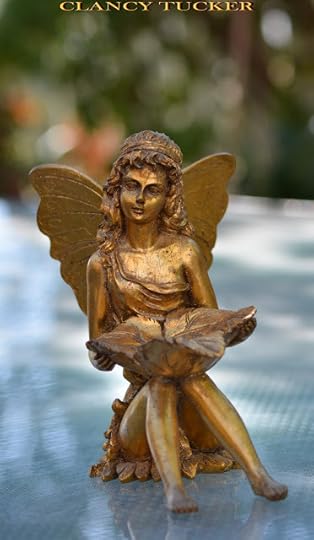

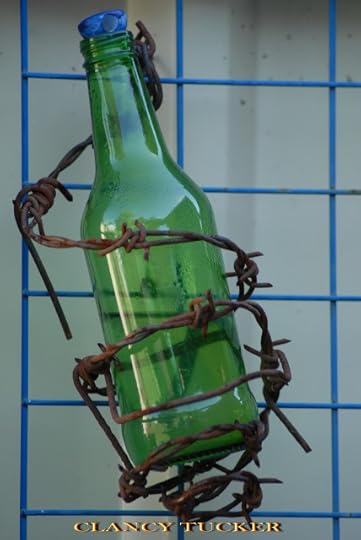








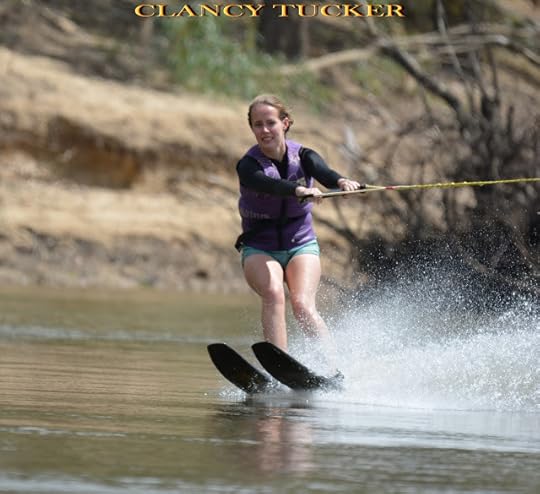

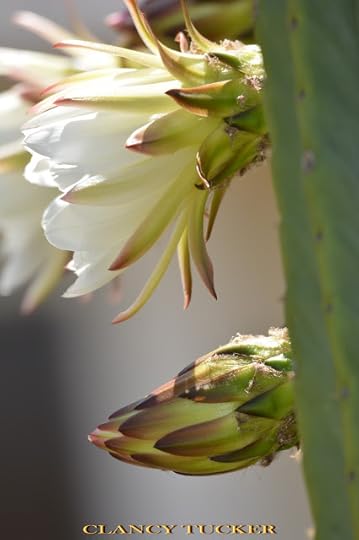



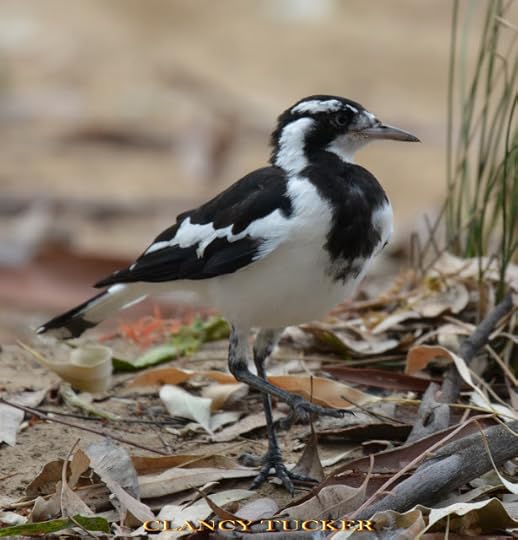
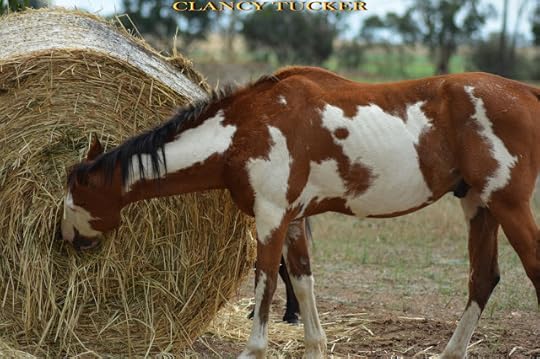

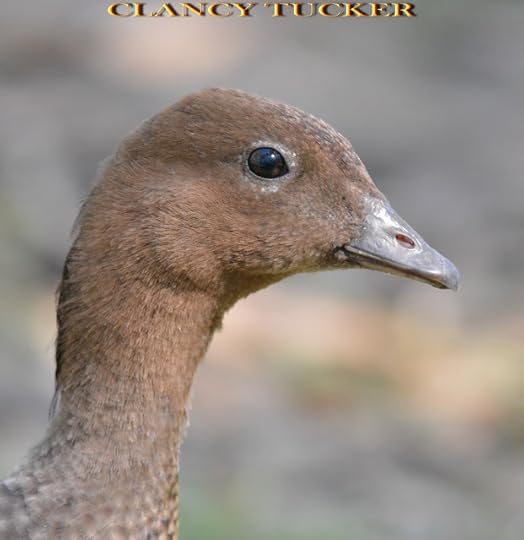

Clancy's comment: How do I find these shots? Easy. I take my camera everywhere. You never know what will appear. However, some days I have a break from writing, pack my cameras in the car and take off - looking, looking all the time.
I'm ...
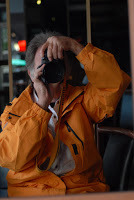
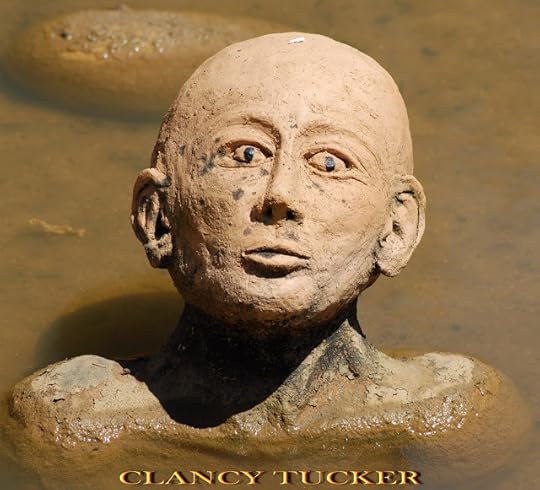
Published on May 31, 2017 15:26
May 30, 2017
31 May 2017 - QUOTES WORTH READING

QUOTES WORTH READING
G'day folks,
Time for some more quotes, and a touch of humour, to get you started for the day ...



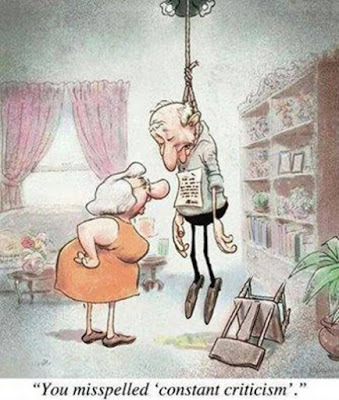






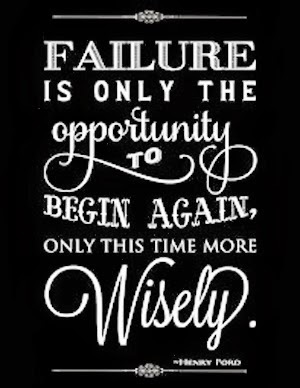
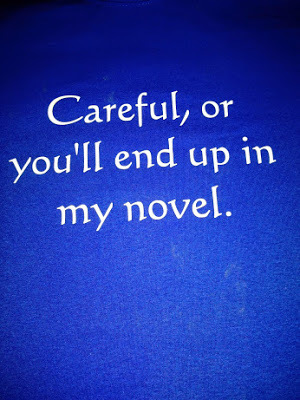
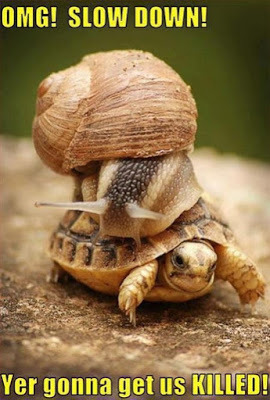

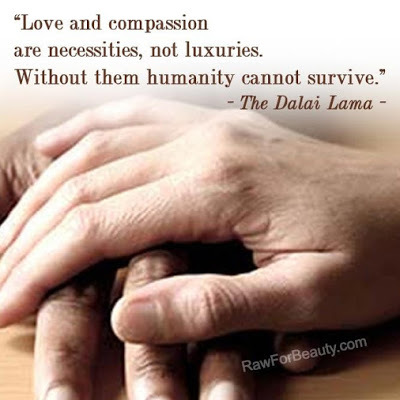




Clancy's comment: Mm ... There are some good reminders here.
I'm ...

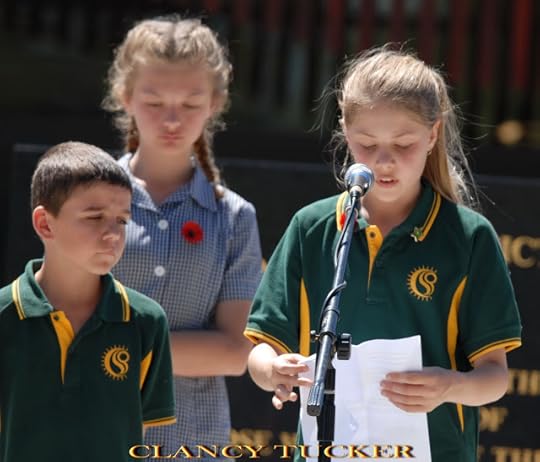
Published on May 30, 2017 15:12
May 29, 2017
30 June 2017 - TOP QUOTES FROM WRITERS

TOP QUOTES FROM WRITERS
G'day folks,
Welcome to some more wise tips from other writers.




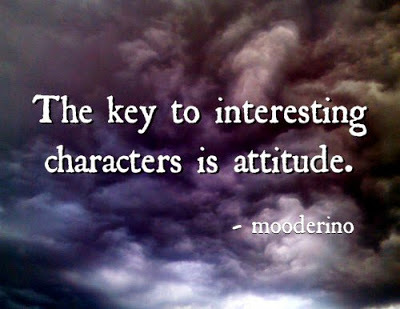
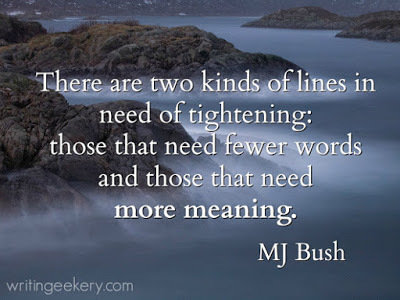



Clancy's comment: Some wise tips here.
I'm ...


Published on May 29, 2017 15:02
May 28, 2017
29 May 2017 - JIMMY BARNES - Australian Rock Legend
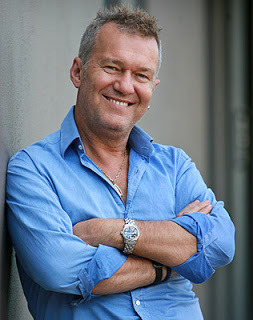
JIMMY BARNES- Australian Rock Legend -
G'day folks,
Welcome to a brief summary of one of Australia's greatest rock singers. Wild-child, rock star, soul man, statesman – Jimmy Barnes has covered some ground to become an Australian icon.
You can’t talk Australian music without mentioning Jimmy Barnes. As front-man for the legendary Cold Chisel, he tore through the Australian music scene in the 70s and 80s, then went on to do the same as a solo artist.

In a career that spans four decades, it’s easy to lose sight of just how incredible his achievements are. How is this for a taster? Across his recorded output, Jimmy has had 14 Top 40 albums with Cold Chisel and 13 charting solo albums – including nine Number Ones – and holds the record for the most hit albums of any Australian artist. In the live arena, Cold Chisel’s farewell tour, The Last Stand, is still the highest grossing concert series by an Australian band ever.
In 1984, within a year of the last Cold Chisel show, Jimmy released his first solo album “Bodyswerve”. This was followed a year later with “For the Working Class Man” – a seven times platinum record whose title track became Jimmy’s signature song. “Freight Train Heart”, released in 1987 gave him his first Number One single with “Too Much Ain’t Enough Love”. His first five solo albums were multi-platinum sellers, which all debuted at Number One, culminating in the 1991 release “Soul Deep”, which sold a staggering nine times platinum. All in all, Jimmy has sold over three million solo albums and a further three million with Cold Chisel.

Throughout his career, Jimmy has been a passionate supporter of Australian music and has championed many up and coming musicians. He has worked with some of the country’s leading entertainers, including INXS, Diesel, Kasey Chambers, John Farnham and Archie Roach, to name a few.
Since 2000, Jimmy has continued to record and tour, hitting the Number One spot again with “Double Happiness” in 2005 and “The Rhythm and The Blues” in 2008. He’s expanded his career into television and is the public face of a number of fundraising campaigns and charity.
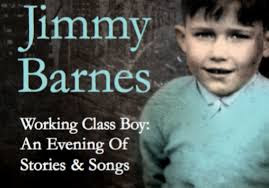
Just to confirm his unique status, Jimmy has been inducted into the Aria Hall of fame twice – once with Cold Chisel in 1993 and then as a solo artist in 2005.

Clancy's comment: I admire this man for many reasons. Sure, he's an Aussie rock legend, but I certainly admire his views on social justice and human rights. He's a class act in all respects.Love ya work, Jimmy!
I'm ...
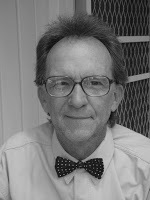

Published on May 28, 2017 15:50
May 27, 2017
28 May 2017 - ROLLING PICTURES

ROLLING PICTURES
G'day folks,
Welcome to some more rolling pictures.






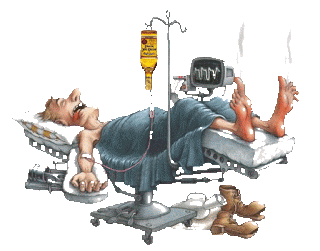

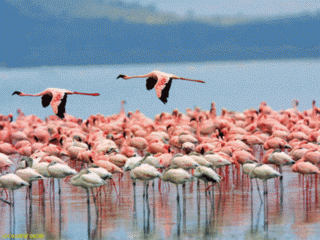


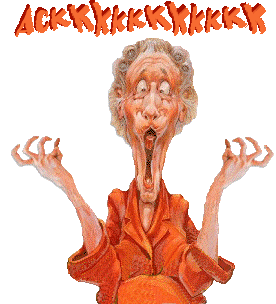




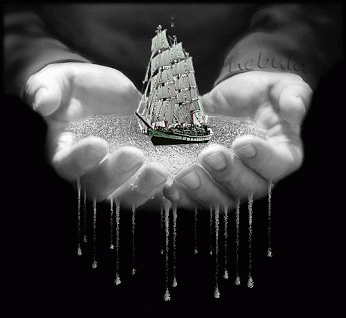





Clancy's comment: Love 'em!
I'm ...

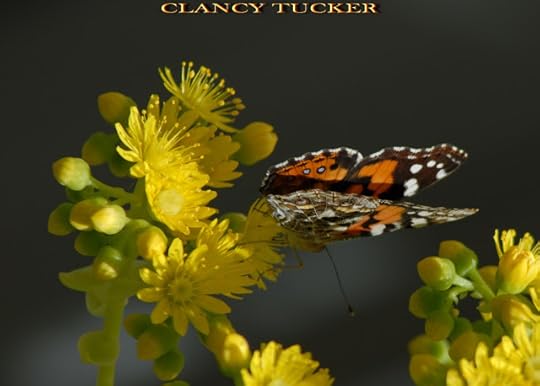
Published on May 27, 2017 16:29
May 26, 2017
27 May 2017 - PETER LALOR - Australian Legend
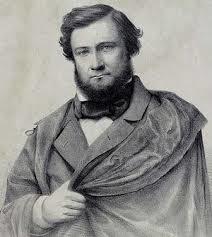
PETER LALOR- Australian Legend -
G'day folks,
Welcome to a man who inspired Australia's first revolution. Peter Fintan Lalor was an Irish-Australian rebel and, later, politician who rose to fame for his leading role in the Eureka Stockade, an event controversially identified with the "birth of democracy" in Australia.
Peter Lalor (1827-1889), Eureka stockade leader and politician, was born on 5 February 1827 in the parish of Raheen, Queen's County, Ireland, son of Patrick Lalor (pronounced Lawler) and his wife Ann, née Dillon. The family was descended from the O'Lalours, one of the Seven Septs of Leix who had fought against the English invasion of Ireland in the sixteenth century. The Lalors had leased the 700 acres (283 ha) of Tenakill since 1767 and remained fairly prosperous until the great famine of 1845. They were supporters of Ireland's freedom from British rule and of the rights of the Irish peasantry. In 1831 Patrick Lalor had led the resistance of the Leix peasants against the forcible collection of tithes for the established church and in 1832-35 represented Queen's County in the House of Commons where he was an ardent advocate for the repeal of the Act of Union. In 1853 he wrote: 'I have been for upwards of forty years struggling without ceasing in the cause of the people'.
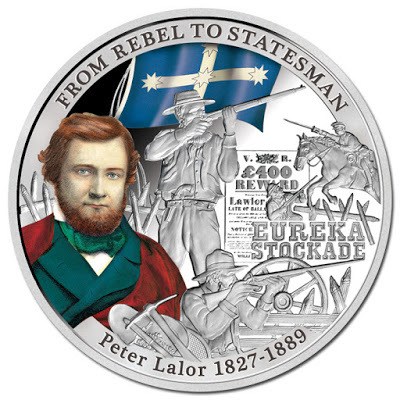
The eldest of Patrick's eleven sons, James Fintan, became a leader of the Irish Confederation and the 'Young Ireland' movement of 1848. According to (Sir) Charles Gavan Duffy, he was 'the most original and intense … of all the men who have preached revolutionary politics in Ireland'. In the Nationhe expounded his belief in 'Ireland her own, from the sod to the sky'. He became co-editor of the Irish Felon in 1848 but was in Newgate prison during the uprising. On his release, he plunged into a new unsuccessful revolutionary conspiracy. He died in December 1849. Fintan had urged his brother Richard in 1848 to form Confederate clubs and engage a blacksmith to make pikes for the peasants. Fintan's letters record only the suggestion that Peter should join the Felon club and that Richard should bring him to Dublin to take part in the rising.
Peter's early years were overshadowed by these dramatic events and by the famine but no evidence shows that he was actively involved. Later he commented that 'from what he had seen of the mode of conducting politics in [Ireland] he had … no inclination to mix himself up with them'. Educated at Carlow College and in Dublin, he became a civil engineer. The years after the famine saw a great emigration from Ireland. Three of the Lalor brothers went to America while Peter and Richard migrated to Victoria attracted by the gold discoveries. They arrived at Melbourne in October 1852 and Peter found work on the construction of the Melbourne-Geelong railway; he and Richard also became partners with another Irishman as wine, spirits and provision merchants in Melbourne. In 1853 Peter left for the Ovens diggings. Early in 1854 he moved to Ballarat. Richard did not accompany him to the diggings and soon returned to Ireland where he became a member of parliament for Leix in 1880-92 and was an ardent Home Ruler and supporter of Parnell.
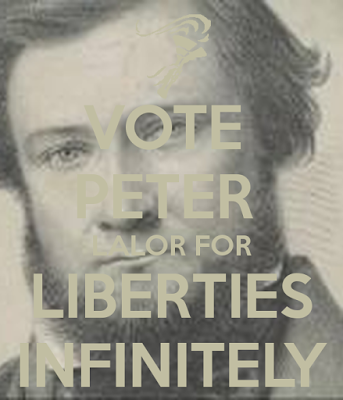
Peter apparently saw himself as much merchant as digger, since he bought from the partnership over £800 worth of tobacco, spirits and other supplies; however, his departure for the goldfields ended his career as a city merchant.
At Ballarat Lalor staked a claim on the Eureka lead, where many Irish diggers were concentrated, although his own 'mate' was Duncan Gillies, a Scot. He was reported to be among the shrinking minority of Ballarat diggers who were having 'fair luck' on their claims; he was involved, although not prominently, in the agitations over the miners' licence and 'digger-hunting'. Later Lalor wrote, perhaps thinking of the wrongs of Ireland, 'the people were dissatisfied with the laws, because they excluded them from the possession of the land, from being represented in the Legislative Council, and imposed on them an odious poll-tax' (licence fee) which an arbitrary officialdom sought to collect from diggers.
The Ballarat Reform League arose from the agitation against the imprisonment of three diggers charged with the burning of Bentley's Hotel. The league's programme reflected the radical beliefs of its leaders: it was overtly Chartist in its demands and, some said, covertly republican. Lalor was a member of the committee, although he must have had reservations about parts of its programme. On 29 November 1854 the league called its first mass meeting to hear the report of its deputation to the governor. Sir Charles Hotham had promised an inquiry into the diggers' grievances but refused to accede to the diggers' 'demand' for the release of their mates. The mood of the 12,000 diggers who gathered on Bakery Hill for the first time under their Southern Cross flag was for physical resistance. Resolutions were carried calling on the diggers to burn their licences and pledging the protection of the 'united people' for any digger arrested for non-possession of a licence.
Lalor's first public appearance was at this meeting: he moved for a further league meeting on 3 December in order to elect a central committee.
On 30 November the troops had undertaken a 'digger hunt' on Bakery Hill. The news of the resulting clash spread rapidly through the diggings to the Eureka, where Lalor was working in his shaft, 140 ft (43 m) below ground, with Timothy Hayes, chairman of the league, at the windlass above. Diggers rushed to the scene and, as the troops withdrew with their prisoners, occupied the hill where the flag was again raised. The diggers dispersed to gather strength and resolved to reassemble at 4 p.m. None of the regular spokesmen was then present and Lalor 'mounted the stump and proclaimed “Liberty”.' He called on the men to arm themselves and to organize for self-defence. Some hundreds were enrolled and Lalor, according to Raffaello Carboni,'knelt down, the head uncovered, and with the right hand pointing to the standard, exclaimed in a firm measured tone: “We swear by the Southern Cross to stand truly by each other to defend our rights and liberties”. A universal well-rounded Amen, was the determined reply'. That night Lalor wrote to his fiancée, Alicia Dunne, a school-teacher in Geelong: 'the diggers … in self-defence, have taken up arms and are resolved to use them … I am one amongst them. You must not be unhappy on this account. I would be unworthy of being called a man, I would be unworthy of myself, and, above all, I would be unworthy of you and of your love, were I base enough to desert my companions in danger'.
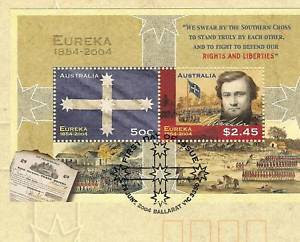
Next morning some 1500 diggers assembled on Bakery Hill and marched behind their flag to the Eureka. The leaders met and appointed Lalor commander. In response he said: 'I expected someone who is really well known to come forward and direct our movement. However, if you appoint me your commander-in-chief, I shall not shrink. I tell you, gentlemen, if once I pledge my hand to the diggers, I will neither defile it with treachery, nor render it contemptible with cowardice'.
In the next two days both sides continued their preparations. The diggers threw up a barricade of which Lalor wrote, 'it was nothing more than an enclosure to keep our own men together, and was never erected with an eye to military defence'; yet it closely resembled the fortified circular encampments planned by Fintan Lalor in 1848. Behind it, the men drilled and blacksmiths manufactured pikes. Lalor claimed no military expertise; he appointed a young American to look after the military side while he organized picketing and the procurement of arms, ammunition and other supplies. The government camp organized for action and infiltrated the stockade with spies.
Lalor did not expect an immediate attack and did not plan to confine defence to the stockade. By midnight on Saturday only about 120 men were left in the stockade, most of them Irish. Some hundreds had left to spend the night in their tents. At about 3 a.m., Sunday, 3 December, the troops and police attacked. They quickly stormed the flimsy stockade and its defences, killing thirty or more diggers and taking over a hundred prisoners. True to his pledge Lalor had stood his ground but was hit in the left arm and collapsed. He was hidden under logs and escaped the bayonets of the attackers. He was smuggled from the battlefield and eventually reached the home of Father Smyth, where his arm was amputated at the shoulder by a party of doctors. Legend has Lalor recovering consciousness during the operation and, seeing one doctor with signs of faintness, saying 'Courage! Courage! Take it off!'
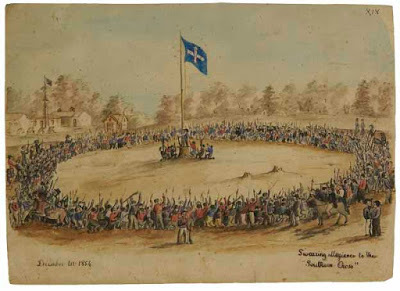
Hotham offered a reward of £200 for information leading to the apprehension of a 'person of the name of Lawlor … height 5 ft 11 ins [180 cm], age 35, hair dark brown, whiskers dark brown and shaved under the chin, no moustache, long face, rather good looking and … a well made man' who at Ballarat 'did … use certain TREASONABLE AND SEDITIOUS LANGUAGE, and incite Men to take up Arms, with a view to make war against Our Sovereign Lady the QUEEN'. There were no takers: public sympathy was overwhelmingly with the diggers. Lalor remained concealed in Ballarat for several weeks; from there he was taken by dray to Geelong, where he was cared for by Alicia Dunne and married her on 10 July 1855 at St Mary's Church.
Public subscriptions for the disabled Lalor raised enough money for him to buy '160 acres [65 ha] of very good land within 10 miles [16 km] of Ballaarat'; he emerged from hiding to bid for the land and was not arrested. In March the reward had been revoked, and in April the thirteen diggers charged with treason were acquitted. The colonists generally shared Lalor's judgment of the stockade: 'neither anarchy, bloodshed, nor plunder, were the objects of those engaged … Stern necessity alone forced us to do it'. One eye-witness reports Lalor as saying that his object as leader was 'independence'; if this were so, it would seem that the independence he wanted was from arbitrary rule, from encroachments by the Crown on 'British Liberty', and that granted by access to the land, rather than the 'independence' of a republican democracy.
With the adoption of the recommendation of the commissioners appointed by Hotham to inquire into the condition of the goldfields that the Legislative Council be enlarged to include elected representatives of the goldfields, Lalor was one of two diggers' leaders returned unopposed in November 1855 to represent Ballarat. He told his electors: 'I am in favour of such a system of law reform as will enable the poor man to obtain equal justice with the rich'. When the first parliament was elected under the new Constitution in 1856 Lalor was returned unopposed to the Legislative Assembly for North Grenville, a Ballarat seat. He was appointed an inspector of railways at a salary of £600, but was soon debarred from this post when legislation was passed prohibiting civil servants from sitting in parliament.
In the assembly Lalor spoke out for the interests of the diggers: he successfully advocated compensation for the victims of Eureka, and unsuccessfully the right of miners to enter private property in search of gold; in vain he opposed the appropriation of funds for a memorial to Hotham, saying, 'There was sufficient monument already existing in the graves of the thirty individuals slain at Ballarat'. Yet he aroused hostility among his digger constituents by supporting plural voting on a property franchise and a six-months' residency qualification for the franchise, and land legislation which radicals held to favour the squatters. In defence he said that he would never consent to deprive a freeholder of his right to vote in virtue of his freehold, and that the danger inherent in conferring the franchise on 'an unsettled population' should be balanced 'by infusing into the people a conservative element by attaching them to the land'. He denied that he was a democrat if that meant 'Chartism, Communism, or Republicanism', but asserted that 'if democracy means opposition to a tyrannical press, a tyrannical people or a tyrannical government, then I have ever been, I am still, and will ever remain, a democrat'. The diggers were not convinced, and Lalor wisely stood for South Grant in 1859. He was elected and became chairman of committees at a salary of £800.
Lalor's stance in parliament appeared puzzlingly inconsistent. He was an early advocate of protection of local industry, believing that it would provide work for men no longer able to make a living on the goldfields, but he also supported assisted immigration. Although a devout Roman Catholic, he opposed state aid to religion and supported a national education system provided that provision was made for religious teaching. He supported the 1860 and 1862 Land Acts providing for selection from the squatters' runs, but urged sale by auction of both freehold agricultural land and grazing leases, declaring that the creation of 'a middle class of landed proprietors' able to employ labourers at reasonable wages, was preferable to opening the land in small lots to men without capital. He supported reform of the Legislative Council but opposed payment to members. When the McCulloch government came into conflict with the council over the protectionist tariff and later the 'Darling grant', Lalor urged caution and abstained from voting on several of the government's vital measures, holding them to be unconstitutional.

Lalor's pursuit of his own judgment won him no friends in parliament, yet as a good local member with a strong personal following he topped the poll for South Grant in 1868. The ministry repaid his 'unsoundness' by refusing to reappoint him as chairman of committees. In the next three years Lalor virtually abandoned parliament for private business, attending only 31 of 174 divisions. He operated as a land and mining agent and was director of several mining companies, the most important being the New North Clunes. He was also chairman at a substantial salary of the Clunes Water Commission. On his initiative legislation was passed enabling the commission to borrow money for the construction of a water supply system for Clunes. The money was raised by the New North Clunes Mining Co. In 1873 the government bought the commission for £65,000, thus enabling New North Clunes to declare what the Ballarat Stardescribed as the largest dividend ever paid by a mining company—£30 a share. It was also alleged that Lalor employed blacklegs to enforce a wage cut in one of his mines. Lalor was narrowly squeezed out of third place in the 1871 election by Jonas Levien whom he angrily described as 'a little jew boy' and against whom he pursued a vendetta.
The 1874 election was fought on the reform of the Legislative Council. Lalor was by now convinced that domination of the council by squatters made reform necessary, and that its powers should be limited to those enjoyed by the House of Lords. He was elected third member for South Grant. When (Sir) Graham Berry formed his first government in 1875, Lalor became commissioner for customs. The government was defeated after a few months but Berry was refused a dissolution by the governor and led his followers in a stonewalling campaign to disrupt the conduct of business. Lalor supported Berry's tactics wholeheartedly.
In the 1877 election Lalor again backed all Berry's policies, including payment of members. He won a landslide victory, and Lalor became postmaster-general and as commissioner for customs negotiated in vain with Sir Henry Parkes to remove the border duties between Victoria and New South Wales. When the council refused to accept the payment of members, Berry retaliated by sacking the colony's senior public servants. Melbourne Punch laid this 'Black Wednesday' at the door of Lalor who had been outspoken in denouncing the 'arrogant power' of the council. However, Lalor twice embarrassed the government and asserted his independence by voting against measures which Berry believed significant.
The Berry government was defeated in 1880 but Lalor topped the poll for South Grant as a Berryite. In a later election that year Berry won again and moved for the appointment of Lalor as Speaker. Although denounced by Thomas Bent as a 'rebel against the British crown' and as having been 'drunk on the floor of this House', Lalor was appointed unopposed. 'The first duty of a Speaker', he said, 'is to be a tyrant. Remove him if you like, but while he is in the chair obey him. The Speaker is the embodiment of the corporate honour of the House. He is above party. He is the greatest representative of the people'. Despite conservative fears that Lalor would lean towards his political friends he maintained the strength, dignity and impartiality of the chair, and was reappointed by successive parliaments until diabetes weakened his physique and impaired his judgment. The death of his only daughter and in May 1887 of his wife greatly affected him, and he resigned as Speaker in September.
The premier, Duncan Gillies, introduced a bill to grant Lalor £4000 to free him of financial worries in his last months. Despite party opposition in the assembly the bill was passed and later carried unanimously in the council. Earlier Lalor had refused the offer of a knighthood. In a bid to regain his health he took leave from parliament, but remained a member at the express wish of his constituents, and went by sea to San Francisco. On his return he became bedridden in the home of his only son, Joseph, where he died on 9 February 1889. Besides the requiem in Melbourne, flags were flown at half-mast and a special memorial service was held at Ballarat.

On entry into parliament Lalor had been described by the Argus as 'a bluff, straight forward gentleman who blurts out plain truths in a homely matter-of-fact style'. Certainly as diggers' leader and as parliamentarian he fought with courage, determination and often passion for the truth as he saw it. His loyalties were to principles rather than to individuals. The inconsistencies of his political stance can perhaps best be explained by the principles he consistently upheld: a well-ordered society based on a broad and prosperous land-holding class, governed by free men in the liberal institutions embodied in British constitutional procedures. Only when a class claimed exclusive and overbearing power and sought to impose its will arbitrarily was Lalor's anger aroused and turned him, however reluctantly, to action. Once committed to a course he did not waver from it. Neither a profound thinker nor a skilful politician, Lalor was a good fighter and a man of rectitude who came finally to earn the respect even of those whom he had most vehemently opposed on grounds of principle.

Clancy's comment: May he rest in peace.
I'm ...

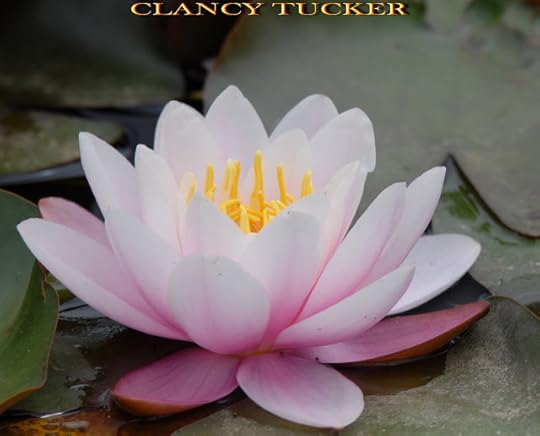
Published on May 26, 2017 16:36
May 25, 2017
26 May 2017 - GRAMMAR MISTAKES

GRAMMAR MISTAKES
G'day folks,
Time to clear up a few words that might give you grief from time to time.
FLOUT/FLAUNT
Are you talking about showing off? Then you don’t mean flout, you mean flaunt. To flout is to ignore the rules. You can think of flaunt as the longer showier one, with that extra letter it goes around flaunting. You can flout a law, agreement, or convention, but you can flaunt almost anything.
PHASE/FAZE
Phase is the more common word and usually the right choice, except in those situations where it means “to bother.” If something doesn’t bother you, it doesn’t faze you. Faze is almost always used after a negative, so be on alert if there is an isn’t/wasn’t/doesn’t nearby.
LOATH/LOATHE
Loath is reluctant or unwilling, while to loathe is to hate. You are loath to do the things you loathe, which makes it confusing, but you can keep them clear by noting whether the word has a "to be" verb on one side and a to on the other (he isloath to, I would be loath to), in which case loathis correct, or it can be substituted by hate (I loathe mosquitoes), in which case you need the e on the end.
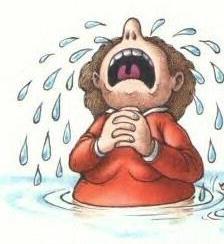
WAVE/WAIVE
The word waveis far more frequent than waive and has a more concrete meaning of undulating motion. It’s often used for waive, "to give something up," perhaps because it fits well with the image of someone waving something away. But when you waive your rights, or salary, or contract terms, you surrender them. You can think of the extra i in waive as a little surrender flag in the middle of the word.
INTENSIVE PURPOSES
Intensive is a word that means strong or extreme, but that’s not what’s called for in this phrase. To say “practically speaking” or “in all important ways” the phrase you want is “for all intents and purposes.”
GAUNTLET/GAMUT
Run the gauntlet and run the gamut are both correct, but mean different things. Running the gauntlet was an old type of punishment where a person was struck and beaten while running between two rows of people. A gamut is a range or spectrum. When something runs the gamut, it covers the whole range of possibilities.
PEEK/PEAK
This pair causes the most trouble in the phrase sneak peek where the spelling from sneak bleeds over to peek, causing it to switch meaning from "a quick look" to "a high point." If you imagine the two Es as a pair of eyes, it can help you remember to use peek for the looking sense.
FORTUITOUS
Fortuitous means by chance or accident. Because of its similarity to fortunate, it is commonly used to refer to a lucky accident, but it need not be. Having lightning strike your house and burn it down is not a lucky event, but according to your insurance company it will be covered because it is fortuitous, or unforeseen.
REFUTE
To refutea claim or an argument doesn’t just mean to offer counterclaims and opposing arguments. That would be to respond or rebut. To refute is to prove that a claim is false. If you refute, the disagreement should be over because you’ve won. If someone accuses you of not having paid for something, you refute the accusation by producing the receipt.

Clancy's comment: I hope you have printed this off and plastered it on the wall of your office ... With all the other important tid bits.
I'm ...


Published on May 25, 2017 15:36
May 24, 2017
25 May 2017 - Crowning Achievements of Maya Angelou

Crowning Achievements of Maya AngelouG'day folks,I've always had a lot of time for this very talented lady. Considered to be one of the most consequential figures of the 20th century, Maya Angelouhad a diverse career spanning five decades — first as a singer and dancer, then as a journalist and civil rights activist, and later as a memoirist, poet and screenwriter.
So, what did she achieve?
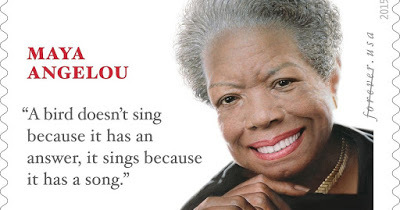
She was a Civil Rights Activist
Having traveled the world and met with Malcolm Xwhile living in Ghana, Maya Angelou returned to the U.S. in 1964 to help the black leader in his political efforts. However, soon after she arrived stateside, Malcolm X was assassinated.
Despite his death, Angelou continued working with the Civil Rights Movement and helped fundraise for Martin Luther King, Jr. Unfortunately, the young artist found herself devastated once again, when King was murdered on her birthday in 1968. It was during this time that novelist James Baldwinencouraged Angelou to write and she began work on I Know Why the Caged Bird Sings.
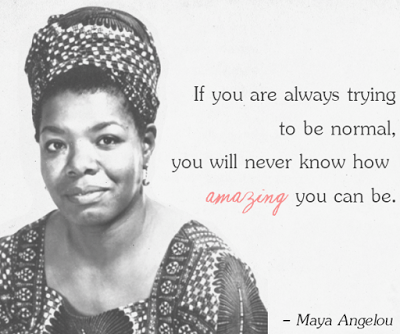
'Caged Bird' became one of the most prominent autobiographies ever written
Recalling her childhood experiences growing up in Arkansas to becoming a mother at 16, Angelou published I Know Why the Caged Bird Sings in 1969. It became an instant bestseller and stayed on the New York Times paperback bestseller list for the next two years. Nominated for a National Book Award in 1970, it is considered her most famous work. In 2011, Time magazine ranked it as one of the most influential books of modern times.
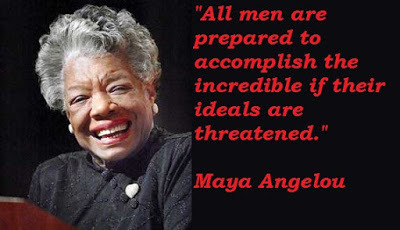
She was the first black woman to write a screenplay for a major film release
In 1972 Angelou expanded her writing and musical talents by writing and scoring Georgia, Georgia, a Swedish-American drama that would later be nominated for a Pulitzer Prize. She would go on to write for television, theatre, and would eventually reach her goal of directing a film with Down in the Delta in 1998.
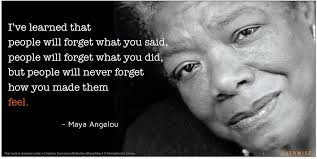
She was the first female inaugural poet in U.S. presidential history
In 1993 Angelou recited her poem, "On the Pulse of Morning," for President Bill Clinton's inauguration. She became the first African-American poet and first female poet to participate in a recitation for a U.S. president's inauguration. The only inaugural poet that came before her was Robert Frostwho recited "The Gift Outright" during President John F. Kennedy'sceremony in 1961.

She was awarded the Presidential Medal of Freedom in 2011
Having garnered a plethora of prestigious literary and humanitarian awards as well as over 50 honorary degrees, Angelou was bestowed the 2010 Presidential Medal of Freedom the following year by President Barack Obama. The award is distinguished as the highest civilian honor in the United States.

Clancy's comment: Maya Angelou was an American poet, memoirist, and civil rights activist. She published seven autobiographies, three books of essays, several books of poetry, and was credited with a list of plays, movies, and television shows spanning over 50 years. Not only, her quotes are gob smacking.
I'm ....

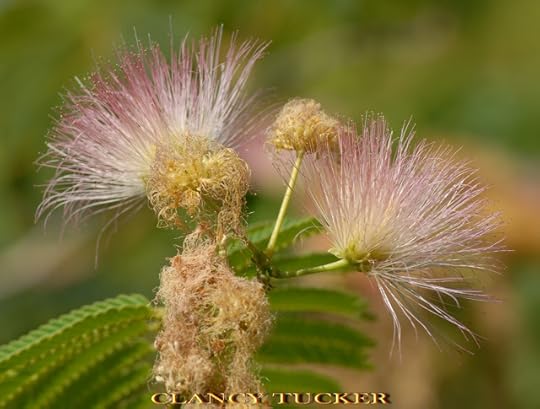
Published on May 24, 2017 16:47
May 23, 2017
24 May 2016 - AMELIA BOYNTON
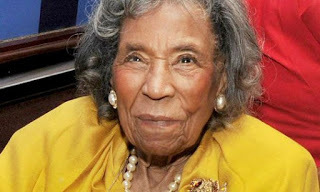
AMELIA BOYNTON
G'day folks,
Here is another outstanding woman involved in civil rights. She is also 103! Amelia Boynton was a woman of many historical firsts and played a pivotal role in the Civil Rights Movement. Her tireless and tenacious work even inspired MLK to join the Selma to Montgomery march in Alabama.
With the recent release of the movie Selma, the world is getting another chance to learn the story of civil rights activist Amelia Boynton. Actress Lorraine Toussaint reenacts Boynton's instrumental role in this chapter of American history. She was one of the organizers of the famous march from Selma to Montgomery on March 7, 1965.
During this protest, Amelia Boynton (now known as Amelia Boynton Robinson) refused to run away from the police. Already a longtime civil rights activist, Boynton stood in shock as the officers began to attack the protestors. She nearly lost her life that day—a day now known as "Bloody Sunday." Boynton, along with other civil rights activists, is credited for generating public support for the Voting Rights Act of 1965.
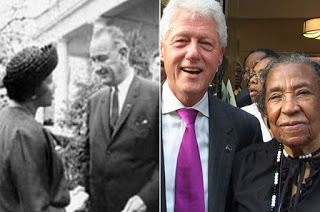
Champion for Civil Rights
Born Amelia Platts in Savannah, Georgia, in 1911, Amelia Boynton was only nine years old when she helped her mother support women's suffrage. She studied at Georgia State (now Savannah State University) and then at the Tuskegee Institute in Alabama. Bright and determined, Boynton became one of the first African Americans to register to vote in Alabama in 1932. She also worked to register other African Americans as voters, forming the Dallas County Voters League the following year.
With her husband, Samuel Boynton, she became a local activist for civil rights in Alabama. The pair campaigned for African Americans to be able to own property, receive education and vote. After working for decades with little success with registering voters, Boynton encouraged the Student Nonviolent Coordinating Committee to come to Selma to help.
Even after her husband's death in 1963, Boynton remained dedicated to social justice. She threw her hat into the political arena the following year. She ran for Congress as a Democrat, making history as the first African American woman to seek national office in Alabama. "I was the only woman, black, white blue or whatnot ever to run," Boynton later told the Washington Post. While she didn't win, Boynton still managed to earn roughly 10 percent of the vote.
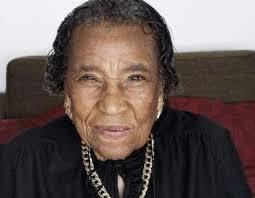
'Bloody Sunday'
In late 1964, Boynton sought for additional support for her efforts in Selma. Fellow activist Andrew Youngcredited her with creating the Civil Rights Movement in her community. As he later explained to the Michigan Chronicle, Boynton approached Dr. Martin Luther King "just before Christmas in 1964 and said, 'You need to come and help us in Selma,' and that is where the Selma movement started." She inspired King and members of the Southern Christian Leadership Conference to take action in Selma.
The decision to march from Selma to Montgomery came after the murder of Jimmie Lee Jacksonin February 1965. Jackson was a young African-American teenager killed by the police in Marion, Alabama, after attending a rally. On March 7, 1965, roughly 600 protestors began their 50-mile march to Montgomery. Governor George C. Wallace had forbid them to go, but they pressed on anyway. The marchers didn't get too far before encountering state and local police waiting for them on the other side of the Edmund Pettus Bridge. They were ordered to go home, but the protestors didn't move. Under the orders of Sheriff Jim Clark, the officers were told to strike those who refused to leave.
Before long, the scene turned to chaos with the officers attacking the protestors with billy clubs and tear gas. As she later described the event to the Mirrornewspaper, "I think I was frozen. It was not out of fear. It was amazement, of people being beaten. I saw blood on the highway. I saw people falling." Boynton was struck repeatedly with a billy club and had tear gas sprayed in her face while she lay unconscious. She had been left for dead, but another protestor came to her aid. The image of Boynton, a middle-aged African American woman, being held by a fellow activist appeared in numerous newspapers and magazines and ignited more support for their efforts.
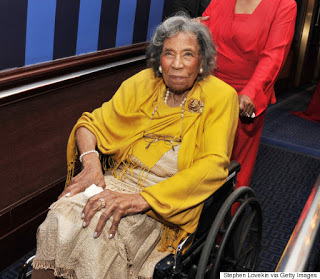
Voting Rights Act of 1965
Boynton and 16 other protestors were injured so badly on "Bloody Sunday" that they needed to be taken to the hospital. But she was well enough two days later to join Dr. Martin Luther King Jr. and other protestors on another march to the now infamous bridge. Later that month, a group of civil rights protestors completed the journey from Selma to Montgomery. This time, the activists had the backing of the federal government. The attack on Boynton and the other protestors had also spurred on the president and Congress to make legal reforms.
Later in 1965, Boynton saw her dreams for political change become a reality. She was invited by President Lyndon B. Johnson to attend the signing of the Voting Rights Act that August. This new law put an end to such discriminatory measures as literacy tests that used to deny many African Americans the right to vote. The act also gave the federal government more oversight over state election practices.
After passing of this important legislation, Boynton continued to work for civil rights. She served on the boards of the King Center for Non-Violent Social Change and National Voting Rights Museum. From the 1980s until 2009, Boynton also worked for the Schiller Institute.
Now 103 years old, Boynton is one of the few living Civil Rights era leaders. She has received many honors for her lifelong commitment to social change, including the 1990 Martin Luther King Jr. Freedom Medal. In 2015, Boynton was invited to President Barack Obama's State of the Union address by Alabama representative Terri Sewell. She was delighted to be there to support the president. "It's a dream come true to have a black man in the White House," Boynton said, according to the New York Post. Boynton also plans on attending the 50th anniversary of Bloody Sunday in March 2015. She still dreams of the day when "prejudice will be gone forever."
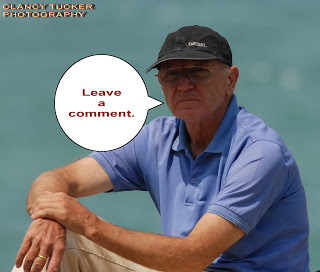
Clancy's comment: Brave lady. 103!! Wow.
I'm ...
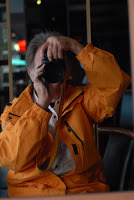

Published on May 23, 2017 17:28
May 22, 2017
23 May 2017 - NICOLE KIDMAN

NICOLE KIDMAN
G'day folks,
Welcome to the life of a famous Aussie actress. Nicole Mary Kidman, AC is an Australian actress and film producer. Kidman's breakthrough roles were in the 1989 feature film thriller Dead Calm and television thriller miniseries Bangkok Hilton.
Synopsis
Nicole Kidman was born on June 20, 1967, in Honolulu, Hawaii, but grew up in Sydney, Australia, where director Jane Campionencouraged her to pursue acting. Kidman's first indie hit, Flirting, was followed by bigger films like Dead Calm (1989) and Billy Bathgate(1991). She was married to screen heartthrob Tom Cruise from 1991-2001. Kidman later received an Academy Award for her lead role in 2002's The Hours. She married Keith Urban in 2006. Her more recent films include The Paperboy (2012), Queen of the Desert (2015) and Lion (2016), which earned her an Oscar nomination for Actress in a Supporting Role.
Acting Debut
Born Nicole Mary Kidman on June 20, 1967, in Honolulu, Hawaii, Nicole Kidman is one of Hollywood's most beautiful and well-regarded leading female stars. At age 4 she moved with her parents to Sydney, Australia. As a schoolgirl she attended a local theater group and, encouraged by director Jane Campion, made a notable film debut in Bush Christmas (1983). Kidman also met one of her best friends, actress Naomi Watts, around this time. The two were at an open call for a bathing-suit ad and later worked together on the 1991 film Flirting.
Her U.S. breakthrough came with Dead Calm (1989), and success followed with Billy Bathgate (1991), To Die For (1995), Practical Magic (1998), and Eyes Wide Shut (1999), in which she co-starred with husband Tom Cruise. She and Cruise divorced in 2001 after 10 years of marriage. They had adopted two children, Isabella and Connor, during their relationship.
While her marriage was ending, Kidman's career reached new heights. She won a Golden Globe for her portrayal of a Parisian singer and courtesan in Baz Luhrmann's musical extravaganza Moulin Rouge! (2001). The following year, Kidman wowed critics and audiences alike with her performance in The Hours (2002), playing famed writer Virginia Woolf. She received several major honors for her work, including her first Academy Award as best actress.
Working with acclaimed director Anthony Minghella, Kidman starred in the Civil War epic Cold Mountain (2003) with Jude Law and Renee Zellweger.
She took on less mainstream projects as well, working with director Lars von Trier on the starkly rendered Dogville(2004). Though more known for her dramatic work, Kidman has also tried her hand at comedy, starring in the remake of The Stepford Wives (2004), with Matthew Broderick and Bette Midler, and Bewitched(2005), with Will Ferrell. She also lent her voice to the lighthearted animated film Happy Feet (2006).
Personal Life
Taking on a more serious role, Kidman starred as legendary photographer Diane Arbus in Fur(2006). The film failed to attract much interest from moviegoers. Kidman's personal life, however, drew a lot of attention that year. She had been dating country singer Keith Urban for some time when she announced that the pair had gotten engaged in May 2006. They got married in Sydney, Australia, on June 25. Guests included other Australian stars such as Russell Crowe, Hugh Jackmanand Watts.
A few months after their marriage, Kidman supported her husband as he decided to enter a rehabilitation facility to receive treatment for his problems with alcohol. The couple appeared to be devoted to each other throughout the crisis and seemed to emerge from it as strong as ever. They welcomed their first child, Sunday Rose Kidman Urban, in July 2008.
Additional Film Projects
Kidman became pregnant while filming her next major film role. Reuniting with director Luhrmann, she starred in the epic drama Australia (2008) with Jackman. Kidman also appeared as a gorgeous screen icon in the 2009 movie musical Nine—based on the Broadway smash hit—with Daniel Day-Lewis, Marion Cotillard, Kate Hudson, Penelope Cruz and Judi Dench, among others.
Kidman has continued to tackle an interesting mix of film projects. She co-starred with Aaron Eckhart in the 2010 independent drama Rabbit Hole, which brought her glowing reviews and a third Oscar nomination. That same year, Kidman and her husband welcomed a second daughter, Faith Margaret.
In 2012, Kidman raised eyebrows for her unusual scenes in The Paperboy with Zac Efron and John Cusack. That year she also co-starred with Clive Owen in the HBO television film Hemingway & Gellhorn. Kidman played journalist Martha Gellhorn, the third wife of Ernest Hemingway. Portraying another famous real-life personality, she later had the lead role in 2014's Grace of Monaco, an Emmy-nominated film about the life of actress Grace Kelly. Kidman also starred in two other 2014 films—the mystery/drama Before I Go to Sleep and the children’s flick Paddington.
In 2015, Kidman appeared in a number of film projects. She starred in the Australian film Strangerland, about a family suddenly in crisis after a terrible dust storm hits the desert town where they live. That same year, she also appeared as real-life adventurer/journalist/cartographer/British spy Gertrude Bell, alongside James Franco and Robert Pattinson in Werner Herzog’s Queen of the Desert. After co-starring with Jason Batemanin The Family Fang, showcased at the Toronto International Film Festival, Kidman next appeared in the remake Secret in Their Eyes as the supervisor of an investigative team. The terse police thriller co-stars Julia Robertsand Chiwetel Ejiofor.
In 2016, Kidman delivered a moving performance as an Australian woman who adopts a lost Indian boy in Lion. She earned Golden Globe and Oscar nominations for her performance.

Clancy's comment: Nicole was born in Honolulu. Mm ... Did you know that many famous Aussies were also born overseas? Mal Gibson was born in Texas, and John Farnham and Olivia Newton John in the UK.
Go, Nicole!
I'm ....

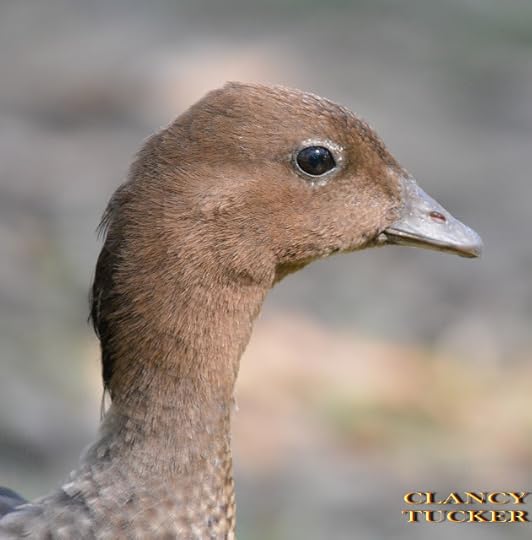
Published on May 22, 2017 16:00



